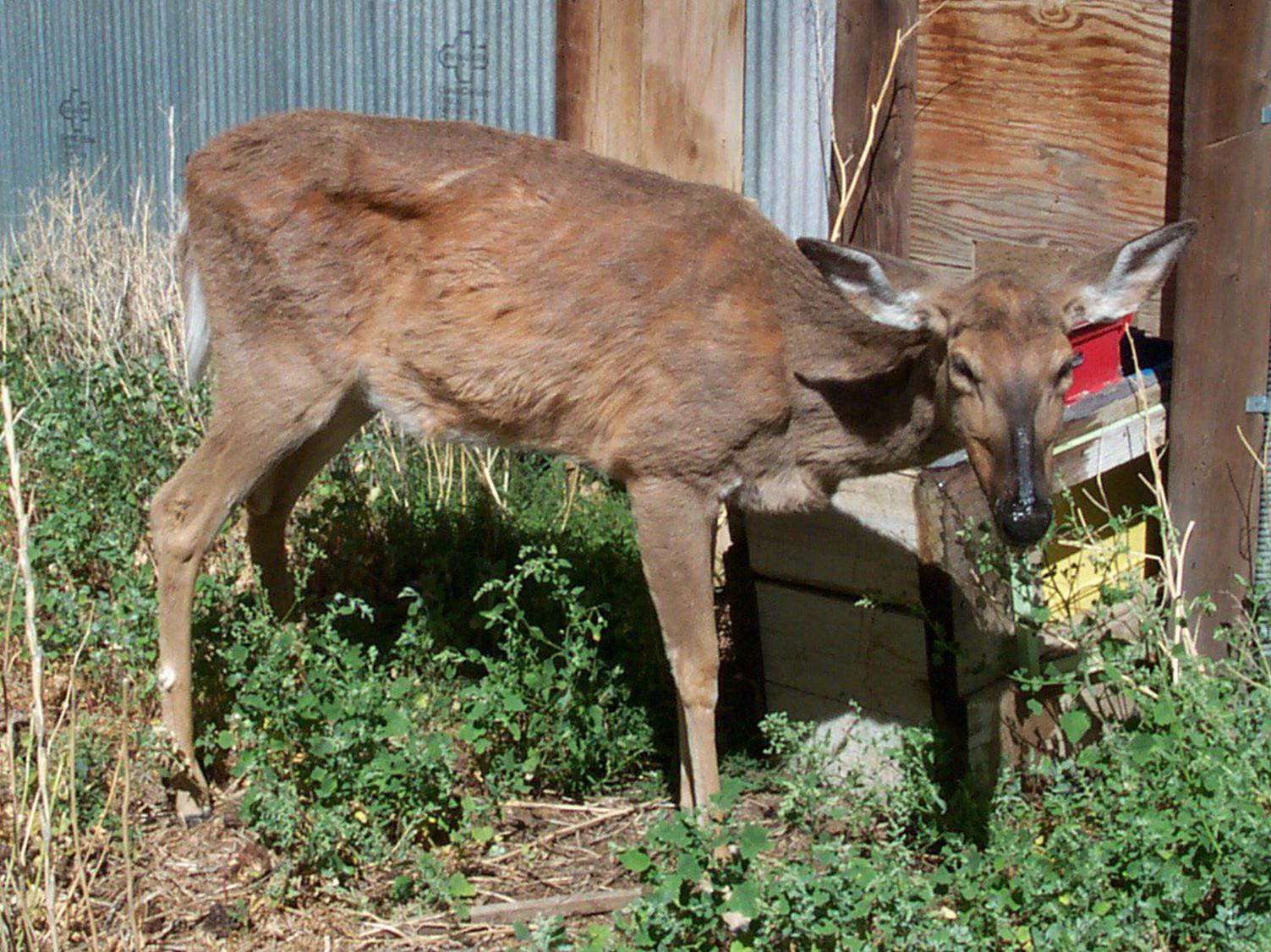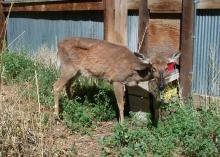Information Possibly Outdated
The information presented on this page was originally released on May 12, 2017. It may not be outdated, but please search our site for more current information. If you plan to quote or reference this information in a publication, please check with the Extension specialist or author before proceeding.
Beware of potential threat to state's deer
STARKVILLE, Miss. -- Diseases are a big concern for deer biologists and managers.
Since the reestablishment of white-tailed deer across the Southeast, hemorrhagic disease has had a negative impact on their populations. Hemorrhagic disease in deer can be caused by epizootic hemorrhagic disease viruses, or bluetongue viruses, and is spread by black gnats.
These viruses occur each year. Much like the flu in humans, this disease is worse in incidence and severity in some years. However, biologists and hunters throughout the Southeast could soon be longing for the good ole days when hemorrhagic disease was the only big threat to deer populations.
In recent years, chronic wasting disease has been making its way into the Southeast. This disease could pose a much greater threat to deer populations than hemorrhagic disease. There is still a lot we do not understand about this disease, but it could be a game changer.
Chronic wasting disease, a neurological disease in deer, elk, moose and other members of the deer family, is similar to scrapie of sheep and mad cow disease of cattle. The infectious agents are called prions, which are abnormal cellular proteins synthesized in the brain, spinal cord and lymph tissues. They are highly resistant to heat and disinfectants. In fact, even after captive facilities/deer farms have been depopulated after deer tested positive for chronic wasting disease, there is no guarantee that they can ever be completely disinfected.
Chronic wasting disease can be transmitted directly from animal to animal or indirectly through exposure to prions that persist in the environment. Prions can be passed in saliva, urine or feces, which is the main reason most biologists and some hunters have negative views of supplemental feeding and baiting of deer for harvest. These practices will not introduce the disease, but they greatly increase the risk of spreading it.
While there is no convincing evidence that this disease can affect humans, the science is not 100 percent settled.
Chronic wasting disease is thought to have originated in the Colorado-Wyoming region. For many years, it seemed to be limited to deer and elk in that area. Today, 23 states have had documented cases of the disease. Texas and Arkansas are the latest. The threat of this disease to our state’s deer herd is very real.
The wasting disease was most likely spread by a combination of factors. Moving deer and related animals -- both legally and illegally -- from states affected by the disease is one cause. Other culprits are hunters who unknowingly brought infected deer or elk carcasses back to their home states. This problem prompted the Mississippi Department of Wildlife, Fisheries and Parks to pass regulations in 2016 making it unlawful to import, transport or possess any portion of a deer or related species from any state, territory or foreign country where chronic wasting disease has been confirmed. Once those prions are here, they are most likely here forever.
Whether we can keep Mississippi free of this disease is questionable. It is possible the disease is already here, and we just have not found it yet. In the meantime, all we can do is take all preventative measures and hope we keep it out of Mississippi and other unaffected states.
For more information on chronic wasting disease, visit http://cwd-info.org.
 Editor’s Note: Extension Outdoors is a column authored by several different experts in the Mississippi State University Extension Service.
Editor’s Note: Extension Outdoors is a column authored by several different experts in the Mississippi State University Extension Service.

Editor’s Note: Extension Outdoors is a column authored by several different experts in the Mississippi State University Extension Service.










